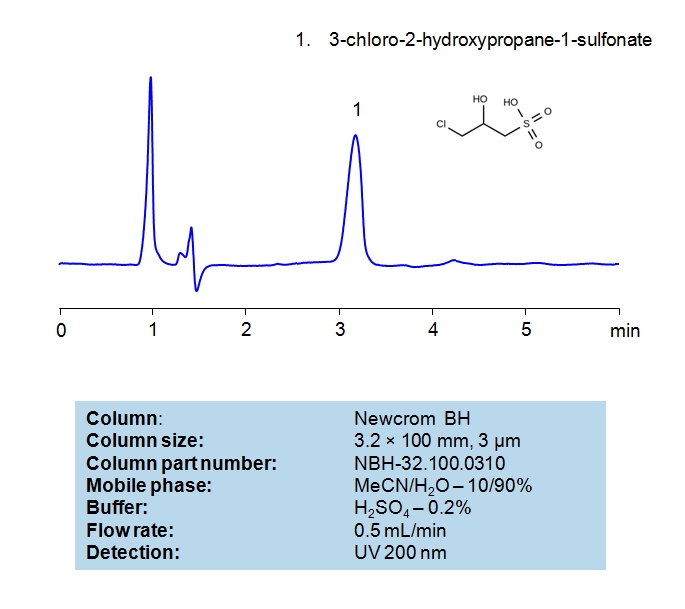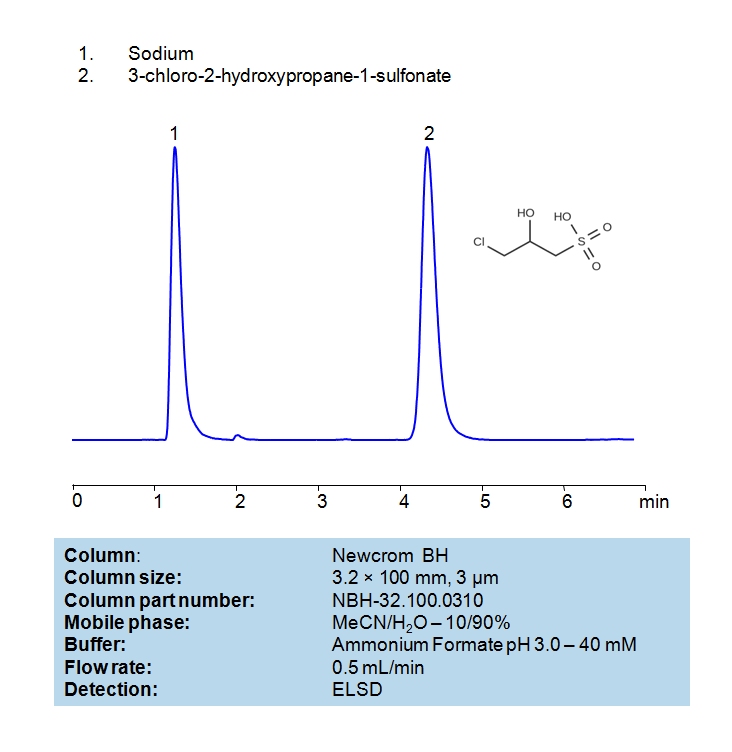Separation type: Liquid Chromatography Mixed-mode
High Performance Liquid Chromatography (HPLC) Method for Analysis of sodium 3-chloro-2-hydroxypropane-1-sulfonate

Sodium 3-chloro-2-hydroxypropane-1-sulfonate is an anionic agent used to prepare negatively charged probe particles to investigate the nanoporosity of cellulosic fibers and their interactions with cationic polyelectrolytes.
Using a Newcrom BH mixed-mode column and a mobile phase consisting of water and acetonitrile (MeCN) with an ammonium formate (AmFm) buffer, the constituent ions of sodium 3-chloro-2-hydroxypropane-1-sulfonate can be separated, retained, and analyzed. This analysis method can be detected by evaporative light scattering detection (ELSD). The ions can also be separated and retained using the same mobile phase, but with a sulfuric acid (H2SO4) buffer instead of the AmFm buffer. This method can be UV detected at 200 nm.
| Column | Newcrom BH, 3.2×100 mm, 3 µm, 100A |
| Mobile Phase | MeOH/H2O – 10/90% |
| Buffer | Ammonium Formate pH 3.0 – 40 mM |
| Flow Rate | 0.5 ml/min |
| Detection | ELSD |
| Column | Newcrom BH, 3.2×100 mm, 3 µm, 100A |
| Mobile Phase | MeOH/H2O – 10/90% |
| Buffer | H2SO4 – 0.2% |
| Flow Rate | 0.5 ml/min |
| Detection | UV 200 nm |
| Class of Compounds | Sulfonate |
| Analyzing Compounds | Sodium 3-chloro-2-hydroxypropane-1-sulfonate |
Application Column
Newcrom BH
The Newcrom columns are a family of reverse-phase-based columns. Newcrom A, AH, B, and BH are all mixed-mode columns with either positive or negative ion-pairing groups attached to either short (25 Å) or long (100 Å) ligand chains. Newcrom R1 is a special reverse-phase column with low silanol activity.
Select options





